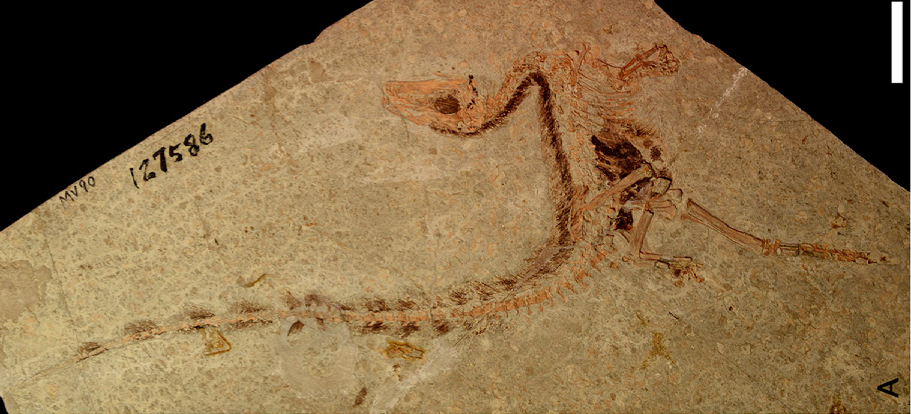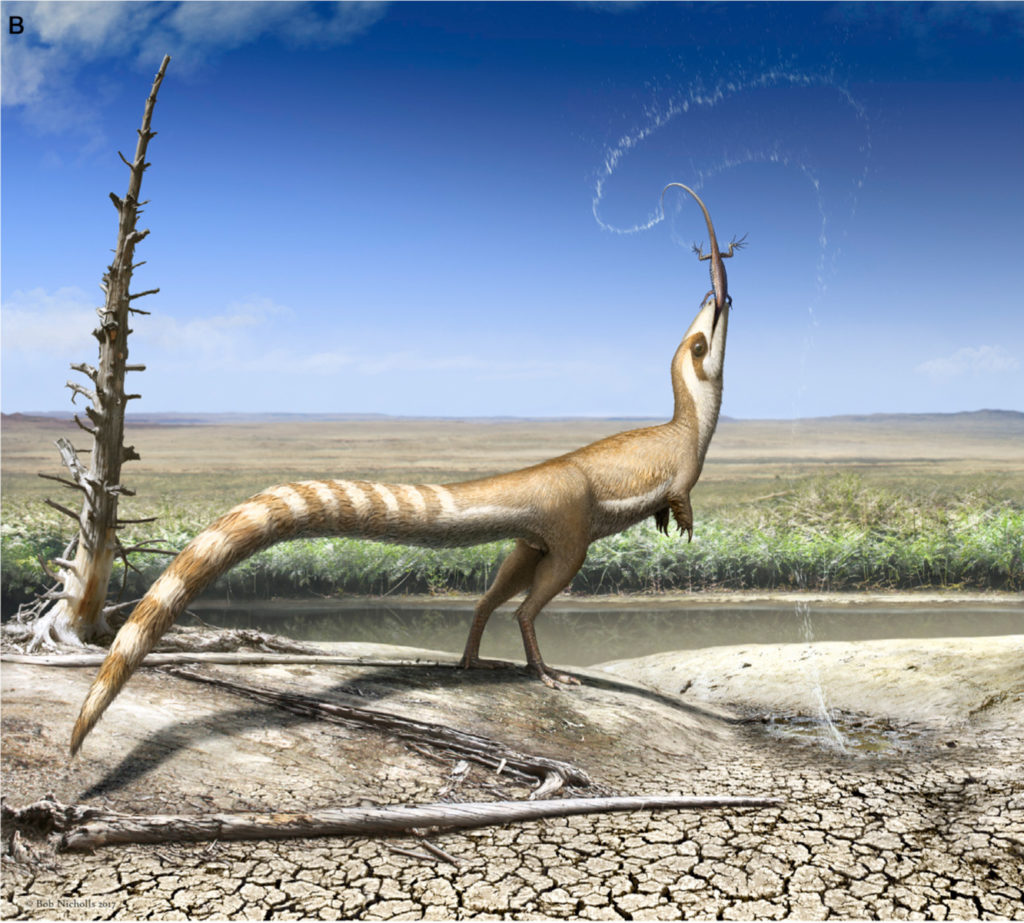A New Look for Sinosauropteryx

Last week, a [paper] came out discussing the color patterns on the theropod dinosaur Sinosauropteryx. This dinosaur was a small-bodied meat eating dinosaur from the Cretaceous (133-120 million years ago) of China.

Figure 1 from the paper showing one of the specimens of Sinosauropteryx.
The authors took photos of 2 specimens of Sinosauropteryx under special lighting conditions. This helped them see the feathers that surround the skeletons. Feathers that had color in them are preserved more easily than feathers without color. So looking at the fossils helps us understand how colors were distributed on the animal. Artists then made reconstructions to show how the colors appeared on the dinosaur. They found that Sinosauropteryx had a striped tail, a bandit mask around its eyes, and a brown back with a white belly.

Figure 2A from the paper showing the color reconstruction on Sinosauropteryx.
The authors also wanted to test what the colors could tell us about what kind of habitat Sinosauropteryx lived in. Animals that live in open habitats (like deserts or grasslands) usually have darker colors on their back and lighter colors on their bellies. This helps break up their body shape so that predators have a harder time seeing them. Animals that live in closed habitats (like forests) usually are darker everywhere and have fewer areas with lighter colors. Think of the color differences between an antelope that lives in the grasslands, and an okapi that lives in the rainforest.

An antelope on the left showing coloration for open habitats. An okapi on the right showing coloration for closed habitats. Okapi from here.
To do this, the authors 3D printed models of the dinosaur and photographed it twice: once when it was fully sunny and once when it was completely cloudy. The full sun imitates the open habitat and the cloudy day imitates the closed habitat. They found that the shadows cast on the model on the sunny day match the color distribution found on the fossils. This means that Sinosauropteryx lived in open habitats.

Figure 2B from the paper showing how the open habitat where Sinosauropteryx lived and its coloration.
It probably used its bandit mask to reduce the sunlight entering its eyes. The striped tail, dark color on its back and light color on its belly helped camouflage it in open habitats, making it harder for predators to see it, and making it harder for prey to see it coming. This study shows us how new techniques can help us answer questions about how dinosaurs lived.